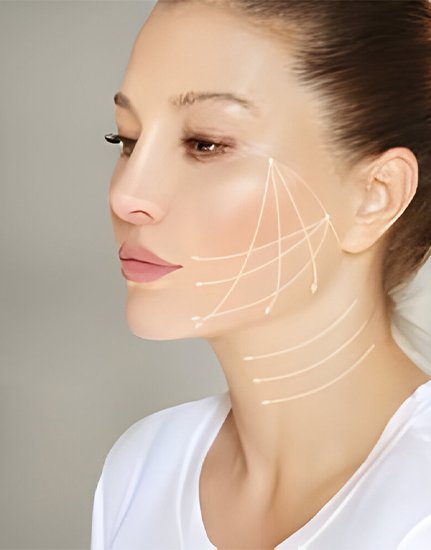- Concerns
- Treatments
FACE TREATMENT
HAIR & BODY TREATMENT
- About-us – 9mclinic
- Media
- Blogs – 9mclinic
- Book Appointment
FACE TREATMENT
HAIR & BODY TREATMENT
| Feature | Thread Lift | Ultherapy | Thermage |
| Immediate Results | Instant lifting effect | Takes 3-6 months for full results | Takes 2-6 months for full results |
| Targeted Sagging Correction | Best for midface, jawline, and brow lifting | Best for deep tissue tightening | Best for skin texture & firming |
| Downtime | Mild bruising/swelling (3-7 days) | Minimal redness, mild tenderness | Minimal swelling, mild tingling |
| Customizability | Precise, localized lifting with adjustable thread placement | Fixed ultrasound treatment areas | Fixed radiofrequency application |
| Affordability | More cost-effective for specific areas | Higher cost | Moderate to high cost |

Frequently Asked Questions
These risks can be minimized by choosing a qualified and experienced practitioner and following post-procedure care instructions diligently.
Potential risks and side effects of thread lifts may include:
When selecting a practitioner for a thread lift, individuals should look for qualifications, experience, and reputation. Specifically, they should consider factors such as:
– Board certification in dermatology or plastic surgery
– Experience performing thread lift procedures
– Before-and-after photos of previous patients
– Positive reviews and testimonials
– Clear communication and personalized treatment plans
The popularity of thread lifts has grown significantly in recent years due to several factors. Patients are increasingly seeking minimally invasive alternatives to traditional facelift surgery, driven by a desire for subtle rejuvenation with minimal downtime. Additionally, advancements in thread technology and techniques have improved the safety and efficacy of the procedure, further contributing to its popularity.
Patients generally report positive experiences with thread lifts, appreciating both the immediate lifting effect and the gradual improvement in skin texture and tone as collagen production increases. Seeing the joy in patients when they look in the mirror and find themselves appearing more youthful is immensely rewarding. Many patients exclaim, “Doc, you brought back my 10-year-younger face,” and some even feel they look up to 15 years younger after this remarkable treatment.
The procedure is often found to be relatively comfortable, with minimal discomfort and significantly less downtime compared to surgical options. The recovery period is short, typically just a few days, allowing patients to quickly return to their daily activities. This convenience, along with the aesthetic benefits, makes thread lifts an attractive choice for those seeking facial rejuvenation without undergoing major surgery.
However, individual experiences can vary. It’s essential for patients to have realistic expectations and understand that, Consulting with a qualified practitioner is crucial to determine if a thread lift is suitable for each individual and to discuss potential outcomes and any risks involved. By doing so, patients can make informed decisions and achieve the best possible results from their thread lift procedure.
Book an appointment